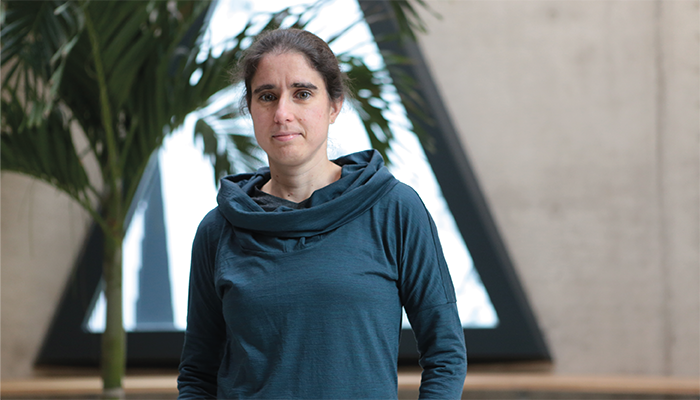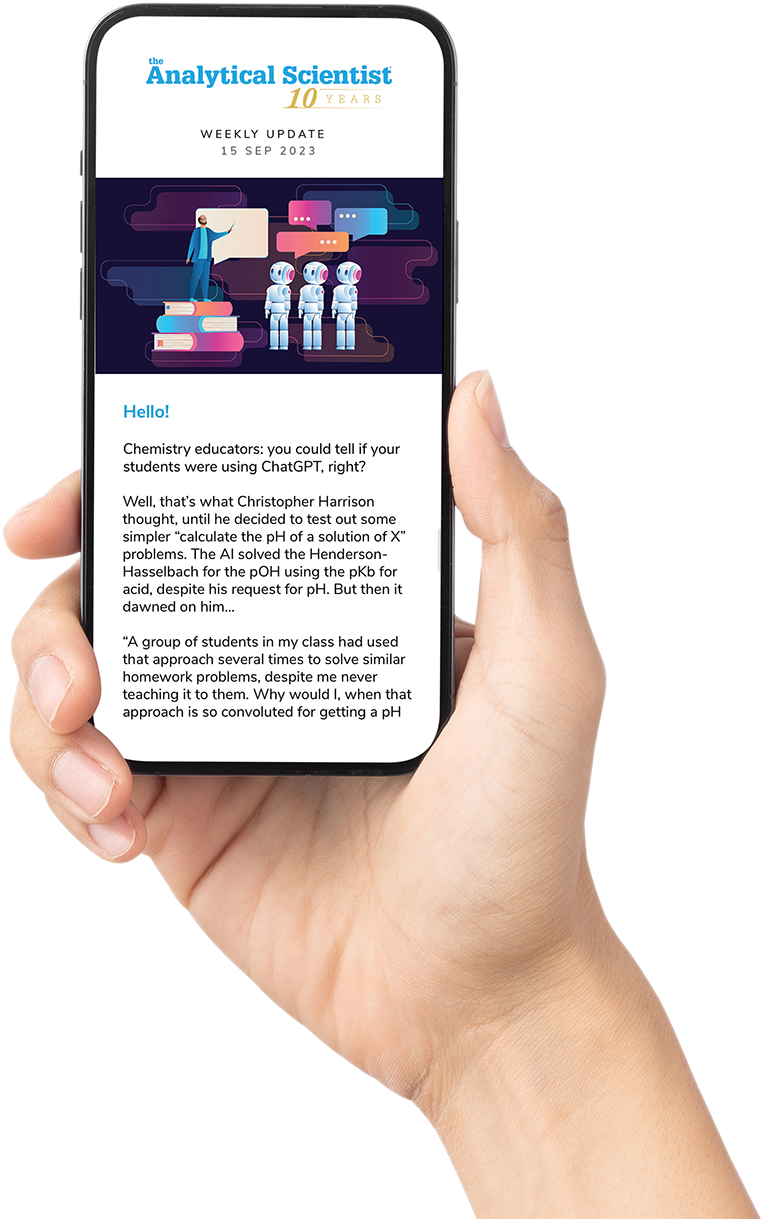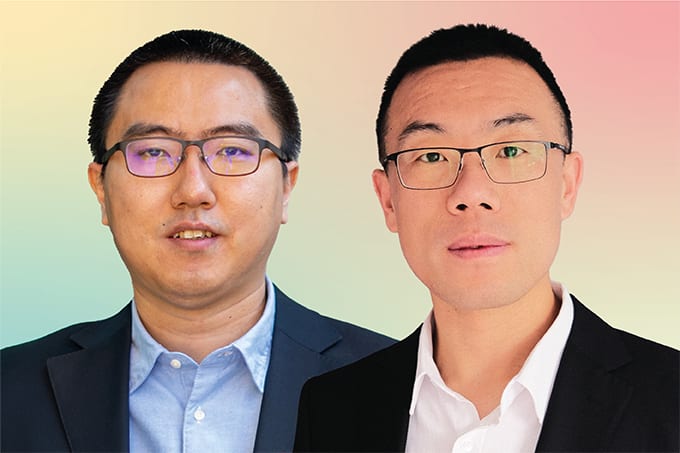
Credit: Supplied by Interviewee
Could you describe your main research aims, in a nutshell, in roughly 30 words or fewer?
The identification of known and unknown chemicals in our environment and their effect on health and disease, primarily with open source cheminformatics approaches coupled with high resolution mass spectrometry.
What is the most critical environmental issue that analytical science can help address over the next decade?
Interestingly, I was asked ~5 years ago to ponder the future of non-target screening (NTS) in 100 or even 25 years’ time and I remember thinking at the time “I hope by then the main challenges of NTS are solved and we can move onto other topics” (which would have been a very short review article so I wrote about something else instead). Reflecting on this now, perhaps I was a little optimistic. Today I feel we have made a lot of progress but we still have a number of issues to overcome before NTS moves into truly routine applications, but I certainly hope that this is now achievable within the next decade. Moving NTS into routine applications will enable (more broad) real-time monitoring of the environment and thus the establishment of early warning systems to better prevent or mitigate environmental catastrophes, or large-scale chemical contamination of human (or other) populations as seen in Dark Water and other films, through to earlier recognition and prevention of regrettable substitutions. I believe we have many of the “puzzle pieces” already available and the general awareness, willingness and know-how – a concerted community effort at harmonizing and transforming NTS into a routine effort could really revolutionize environmental but also personal health monitoring. I believe analytical science can help us achieve this in the next 10 years if we focus our efforts well. It will be interesting to revisit this in 10 years and see if we managed!
What is the biggest challenge in environmental analysis today and how can we overcome it?
I think there are two major challenges (well, I’m sure there are more, but in my immediate area). On the one hand we have the sheer immensity of chemical space, which we still cannot enumerate despite our databases containing hundreds of millions of chemicals. On the other hand it’s our inability as a community to agree on harmonized workflows to establish some standardized methods for non-target screening (NTS) of certain (well characterized) subsets of the chemical space, so we can finally move beyond the current necessity for target analysis before action can be taken. Standardization and harmonization of some established methods will have many advantages, allowing e.g. established protocols and stable data processing workflows rather than custom analysis, which is much easier for routine applications. While it’s important to allow more freedom in research for novel questions, standardization and harmonization is critical for reproducibility, comparability and high throughput. In many cases the discrepancies are small and there is ample evidence to standardize and harmonize (and document the caveats). This will help to identify the gaps for which standard workflows are not sufficient, where additional approaches may still be needed. Despite our many community efforts over the years, we still seem a way off from this point, but I hope we will reach it soon. Hopefully we will have gathered enough data (see other answers) to act on this point soon!
What is the biggest challenge facing the field right now?
Honestly, for me one of the biggest concerns and thus challenges facing the field right now (as for many) is the global instability and the general uncertainty everyone is facing about their future – and also the future of our world. It is making research, science and collaboration a lot more difficult. Instead of an atmosphere of openness and trust, essential to exchange information that is the basis for our research, there is a lack of resources, budget cuts, uncertainty, many external pressures – an increasing “me first” attitude. Environmental research and topics are usually among the first to suffer in tougher times, so it saddens me to see this developing trend in many ways, but I hope we will be strong enough to ride out the storm and still be able to do our best to make positive contributions to the exchange of chemical information and ideas to support other environmental and health/toxicology researchers in helping to ensure a healthier future for us all.
Tell me about an important problem that could be tackled through interdisciplinary work.
The research projects my group performs, the challenges we are trying to address, are currently all interdisciplinary, they are almost impossible to tackle with a single discipline. Already our group name (Environmental Cheminformatics) and institute (Luxembourg Centre for Systems Biomedicine) gives this away, mixing environmental chemistry and informatics in an interdisciplinary centre focused on Systems Biomedicine (i.e. the medical and biological). Extend this to our collaborations and we add even more disciplines, all the way through to social sciences (digital history). When we are trying to understand the impact of the chemical space on both humans and the environment, we need input from many disciplines to develop this understanding, build a clearer picture of the problem and help pool many efforts to tackle this immense challenge. For so long we have focused on individual chemical impacts, yet our reality is a multitude of chemical exposures day in day out. It is impossible to act on all of these, so how can we prioritize the most critical areas to act before they have health impacts, without overreacting or developing regulatory actions that are impossible to implement? We need many chemicals and products to live our daily lives, treat deadly diseases and protect health, yet at the same time risk polluting our world to a state we can no longer clean up at a realistic cost if action is not taken. It is indeed a momentous task that needs the inputs of many – although I like a challenge, determining the impact of chemicals in the context of health and disease is a pretty big one, where I hope we are able to make (collectively) significant inroads in the coming years.
What’s the most memorable piece of advice you’ve ever received?
Actually for me it’s two pieces of advice that combine to be both memorable and recurrent; I use them repeatedly either in combination or separately – “gather the data” and “pick your battles.” Certainly picking the wrong battle at the wrong time can be extremely energy-draining, as is even the right battle at the wrong time, but I work in an extremely challenging (and as many say at times overwhelmingly depressing) field, and picking the right battle at the right time can be extremely rewarding, leading to great science and novel insights that have unforeseen (at the time) rewards and consequences. Some examples from my research could be the 2014 Confidence Levels, the CASMI Contests (2012-2017) and more recently PubChemLite to help “tame” chemical space and make non-target screening more interpretable. “Gather the data” is so true for both research and life: if things don’t seem quite right, or if what’s happening doesn’t match up, gather the data until there’s enough evidence or clarity to make sense of all the inputs in front of you. If you gather enough of the right data, it’s easier to find the right timing for the right breakthrough or action.
Emma Schymanski is Full Professor, Environmental Cheminformatics, Luxembourg Centre for Systems Biomedicine, University of Luxembourg, Luxembourg




